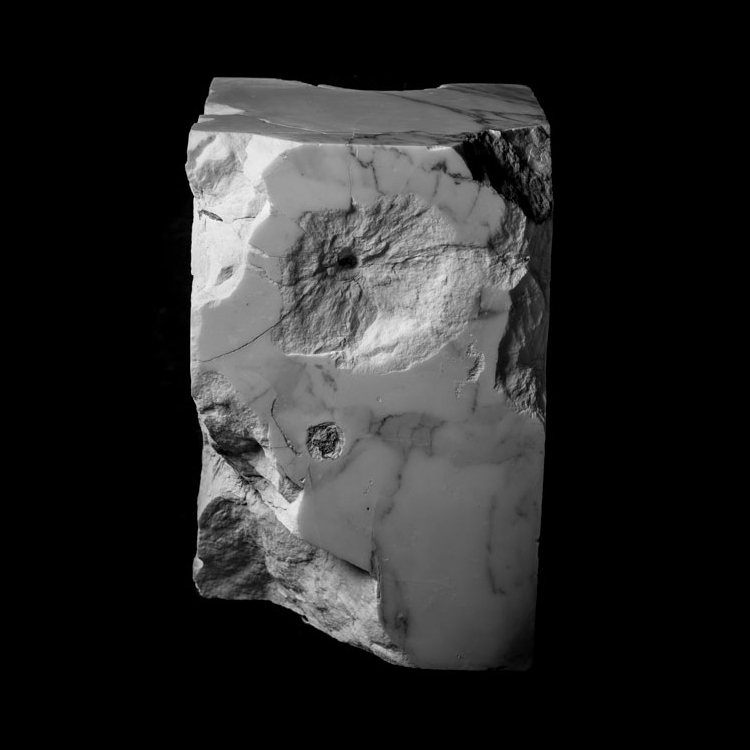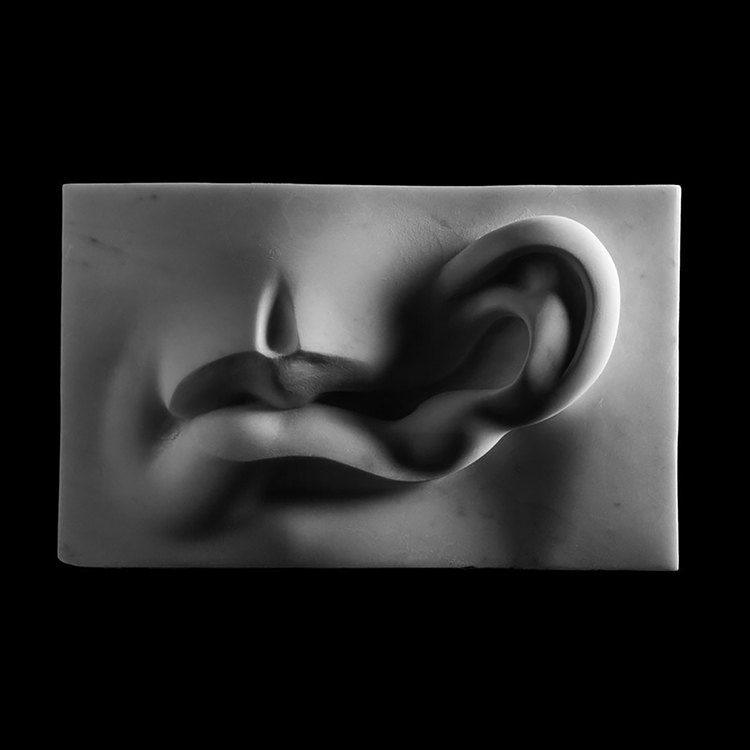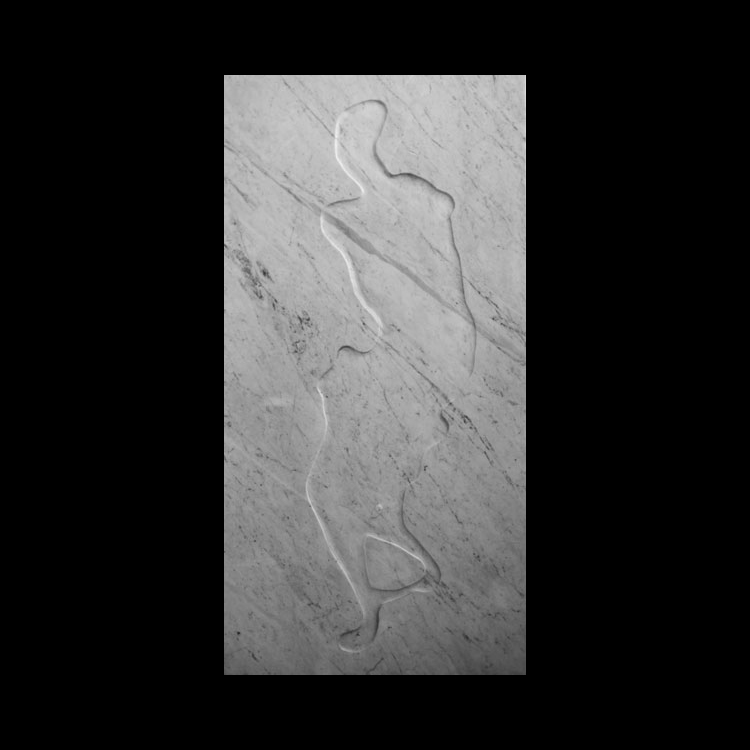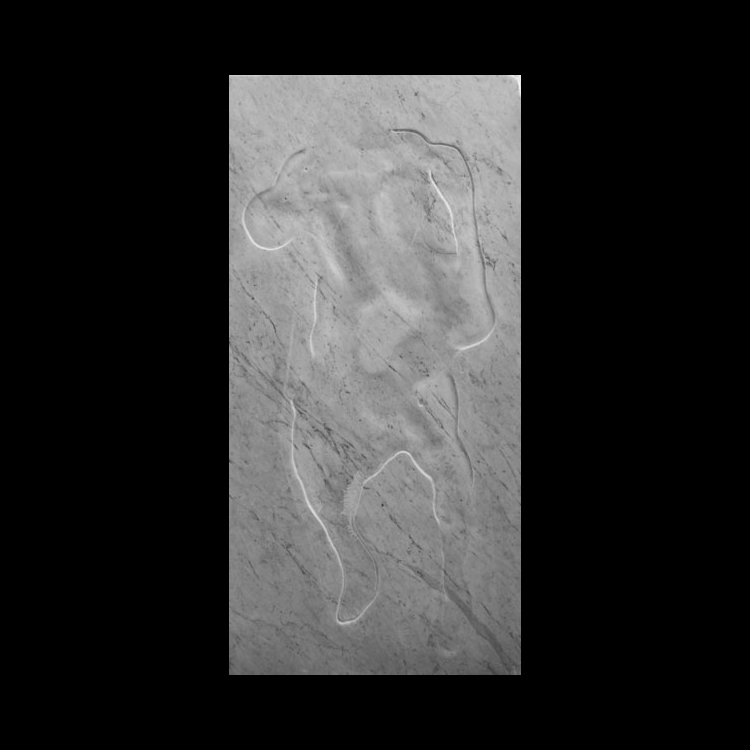The Stone Chooses its Artist
Interview with Stone World Magazine
25 November 2022
SWM: How did you drive your passion for giving new forms to stones?
AJ: My fascination with sculpture started when I was very young. First of all, I grew up in a family of artists, painters to be precise. At home, life revolved around art, and I used to draw all the time. Secondly, I grew up in Florence, literally around the corner of the Galleria dell’Accademia, the famous museum where the David of Michelangelo is displayed. I remember going to the museum regularly, and incessantly drawing the David. But in fact, I was more fascinated by the four unfinished Slaves by Michelangelo who are displayed there. I guess what drew me to them was their force, the sheer power of the bodies that tried to disentangle themselves from the stone. To me, they were the perfect representation of the human condition. As human beings, we’re constantly engaged in an endless struggle to liberate ourselves from some pre-defined structures into which we are born. It’s a struggle to find one’s own identity.
I also liked the fact that these works were unfinished. The chisel marks left on the sculptures are a unique testimony to the presence of the artist. When I stand in front of them now, I know exactly where and how Michelangelo was standing when he left those marks. I can almost hear the hammer and chisel striking the stone. It’s a transcendental experience. And this is partly why I regularly leave my work “unfinished”. Those chisel marks have a raw beauty of their own that I don’t want to lose by sanding down and polishing my sculptures. They are traces that bear witness to the hard labour required to carve a statue. They show that sculpting is a creative process that functions through destruction. Because when stone carving, one must first destroy in order to create.
This realisation – that stone carving is an inherently violent practice – perfectly matched with the topics that I want to address: the human condition; the intrinsic violent character of human nature and society; the inevitability of chaos and entropy. If you look at my work, especially the figures and heads, you will see that they are deformed, contorted, fragmented. They are struggling to find stability in an uncertain and violent world. I’ve openly addressed these topics throughout various exhibitions across the globe, from solo exhibitions at Palazzo Medici-Riccardi in Florence, Italy, or the National Museum of Fine Arts of Havana, Cuba, to group exhibitions at the Rudolfinum in Prague or the Lubumbashi Biennial in the DRC.
SWM: What does sculpture and marble mean to you?
AJ: Sculpture is the practice of removing the superfluous in order to extract the essence hidden within the raw block of marble. But this notion is not limited to the craft itself. The principle grew on me and defined me. It has become a way of life. It taught me to discard the unnecessary in favour of what truly matters. But if you ask me what truly matters, I wouldn’t be able to give you an answer. What I do know is what does not matter. In philosophy this reasoning is associated with the concept of “Via Negativa”. Defining something is easier done by discarding everything that that thing is not. And this is how I carve my sculptures. They are all improvisations, and when I start, I don’t know how they will look like at the end. What I do know is what I don’t want to be there. And that’s what I remove. The sculptor’s way is a way of being in this world.
Similarly, stone can provide us with a unique view of the world.
Stone demands the utmost respect. It’s hundreds of millions of years old. It makes us feel so small. It puts everything – particularly our existence – in perspective. Stone is fluid, and shifts from one state to another over hundreds of millions of years. We say that a marble sculpture lasts forever. But that is not true, it may last tens of thousands of years. But eventually the stone will crumble under the agents to re-form again after hundreds of millions of years. To me, stone teaches a valuable lesson in accepting the inevitable transience of everything that surrounds us – even, or especially, ourselves. Both as individuals and as a species.
That said, we must not forget the political role that stone has played over the course of our existence. From the first primitive civilizations and up to this day, our culture is entangled with stone. Stone is first and foremost a political material: the first tools and weapons were made of stones; borders were marked by stones; (sacrificial) altars were fashioned in stone; laws were written in stone; monuments and statues – which are primarily political instruments – are made out of stone. When carving stone, we must be aware of its wide potential to function as a political device. And when making sculptures we must be aware of our role as sculptors in the complex political apparatus.
SWM: What subject matter inspires you, fascinates you and unleashes your creativity?
AJ: Beside the themes that I mentioned above, I am committed to reflect about the human condition. To provide as an individual that is part of a larger whole, yet another expression that can contribute to a better understanding of what it means to be a human. We live in a special moment that might be pivotal in this search. I see the rise of new 3D technologies and of AI as potentially liberatory. Once we will be able to delegate our tedious daily tasks to the machines, what will keep us busy? What will differentiate us from the machines and define us as uniquely human? After AI will take over our chores and help us get rid of the superfluous – a process that is ironically similar to sculpting – hopefully, we will be left with the essence of being human. Perhaps we will be free to play, love and enjoy the pleasures of life without restraint. But surely, we will also indulge in violence and destruction. And since I tend to see the world from a darker perspective, I focus and reflect on these latter aspects through the practice of sculpture and stone carving.
TSWM: Do you want to send a message to today’s people or to the future with your works?
AJ: I don’t see it as my task to send messages or to prophesize truths. All I want to do is to look at the world from my perspective and point out certain issues that I believe need attention. I simply try to present and generate awareness around certain pressing topics. It is up to the viewers to think about them and take a stance.
Regarding the future, if we’re connected to the world that surrounds us – and in today’s world it’s impossible not to be, unless one lives in complete isolation – then our work will inevitably be part of a heritage that reflects what is happening around us and it will inevitably represent the time in which we lived. And together with all previous testimonies, our contribution will further contribute to the history, and definition of humankind.
SWM: Which marble do you use mainly?
AJ: The majority of my sculptures are carved in Statuario marble. But I’ve also carved in other stones. Like the more readily available Belgian Blue Stone (I live in Belgium), the beautiful pink Portuguese Aurora Marble and I for my latest work, I used the prestigious Portoro Marble. A beautiful black marble with gold-tinted veins. A gorgeous stone, but incredibly hard to work with by hand.
I’ve also been invited as an artist in residence in various countries, such as Cuba, Palestine and the DRC. In these occasions, I decided to work with local, indigenous stones. And that’s when I started looking at stone from a different perspective. That’s when I discovered the socio-political aspect of stone. That’s when I coined the term “the politics of stone”, which I developed further in my PhD thesis. But that’s another story…
TSWM: When choosing a stone, how do you understand that it is the right stone among others? Do you have certain criteria when choosing stones?
AJ: I have two criteria that contradict – or complement – each other:
Sometimes I spend a considerable amount of time in search for the right stone. But I believe that it’s also the other way around. It’s the stone that chooses you. After having spent days, sometimes even weeks, looking at different blocks and types of stone, a few ones make a remarkable, yet inexplicable impression, and then one in particular calls my attention for reasons that are not easy to pinpoint. It simply resonates in with me. Partly because of its shape, the color, the veins, the story behind it. But it’s also a little bit of a mystical experience.
At other times, I don’t like to be too picky. I believe that we must learn to accept what is at hand and make the best out of it. We didn’t get to choose where we were born, who our parents were, our gender, our language. They were given to us, and we must learn to navigate the world with these given facts and shape them as we go. In the same manner, I am often content with what is available at hand.
TSWM: Have you ever used Turkish stone in your works before? Are there any Turkish marbles that you know, that interest you and want to work with?
AJ: I haven’t used Turkish marble yet. I’m always interested to work with new stones. But it must be done within the right context. For example, if it would be for a site-specific project in Turkey. That would make total sense. Especially considering today’s pressing environmental issues. The stone market is a billion-dollar business, but its worldwide import and export has a serious impact on the environment. In view of this, architects, sculptors and designers should start opting for the implementation of local stones in their projects instead of having them shipped from the other side of the globe.
SWM: How much do you use technology while making your sculptures? How important is the manual practice of sculpture in your art?
AJ: It depends on what you refer to when saying technology. Every tool is technological. Even simple tools like hammers and chisels. Especially if you also consider the people that manufactured them with their high-tech instruments. And then there’s the people at the quarries, with their diamond wires and machines who worked hard to pre-cut the blocks for me. And the truck drivers who drove it from the quarry to my studio. They, and their technology, should be credited as well. So in that sense, I make a wide use of technology.
But I suspect that you were asking about more recent technologies such as 3D software, CNC cutting machines and AI. In that case, I use none of them. But I have nothing against them, on the contrary, I am positively excited about their development. But not for the reasons you might think at first. I believe that technology will free us from all the tedious chores that we shouldn’t be occupied with. It will give us back our dignity and our creativity. Humans are not made to be working on an assembly line. Let the machines do that. Similarly, if the making of a specific sculpture can be delegated to computers, then for me, that work becomes superfluous. It’s not a sculpture worth carving by hand. Let the computer handle the whole process. I’ll be focussing on what a computer can’t carve. And I am aware that there’s not much left that a machine can’t make. This is why lately my work focusses more and more on the carving action and process rather than on the final result itself. For example, recently I have carved a sculpture using firearms. The guns and the bullets replaced the conventional hammer and chisel. The work, which I am now developing to a larger scale project, is intended to address the issue regarding the necessity to protect our heritage in conflict areas. Similarly, I am now working on a series of women’s portraits that I will treat with acid once completed. With this series I intend to raise awareness on the topic of violence against women, and especially the problem of acid attacks. You see how, then, the choice of tools for making a sculpture radically affects the interpretation of the works.
Also, I don’t work according to the classic tradition where a clay or plaster model is first prepared and then meticulously reproduced in marble with the aid of copying devices. My works are all carved directly in stone, they are improvised. When I start a new sculpture, I don’t know how it will exactly look like once completed. The process might take weeks or months, and the final result is affected by what I experience in that period: the discussions I have, the books I read, the news around the world. That’s something that is not easily programmable yet.
SWM: The marble that stands before you as a block at first turns into another form after meeting your dreams and talent. When you look at it after you have completed your work, what do you think of first and how do you feel?
AJ: While working on a sculpture, I am simultaneously working on myself. The process of making a sculpture is so interesting because it’s a process of self-development, introspection and growth. Carving a sculpture takes weeks, months, sometime even years. And when completed, I’ve grown as a man. A small piece of my otherwise undefined identity has crystallized and become clearer.
Therefore, I carve a sculpture not only for the sake of the sculpture, but perhaps more importantly for who I become in the process of making it. And later, for who the viewer becomes after attentively looking at it. The sculpture is just an object that should inspire us to work on ourselves, that motivates us and helps us reinforce or shift our paradigms.
SWM: What is your goal?
AJ: A revolutionary once said: “The aim is to be more radical than reality”. While the painter Francis Bacon said: “What could I do to compete with the horror [of life] that’s going on?” I’m trying to find the sweet spot in between. And in doing that, I aim to provide a body of work that functions as a mirror that presents the real face of reality – albeit not a happy one – back to us. I want my work to prompt a mind shifting impact in the viewer. To show something that can’t be unseen afterwards. I am working to create a body of work that draws its inspiration from the state of affairs related to our time, while also addressing more universal themes related to the human condition. I want to leave a legacy behind that contributes to the story of humankind.
Share article
































